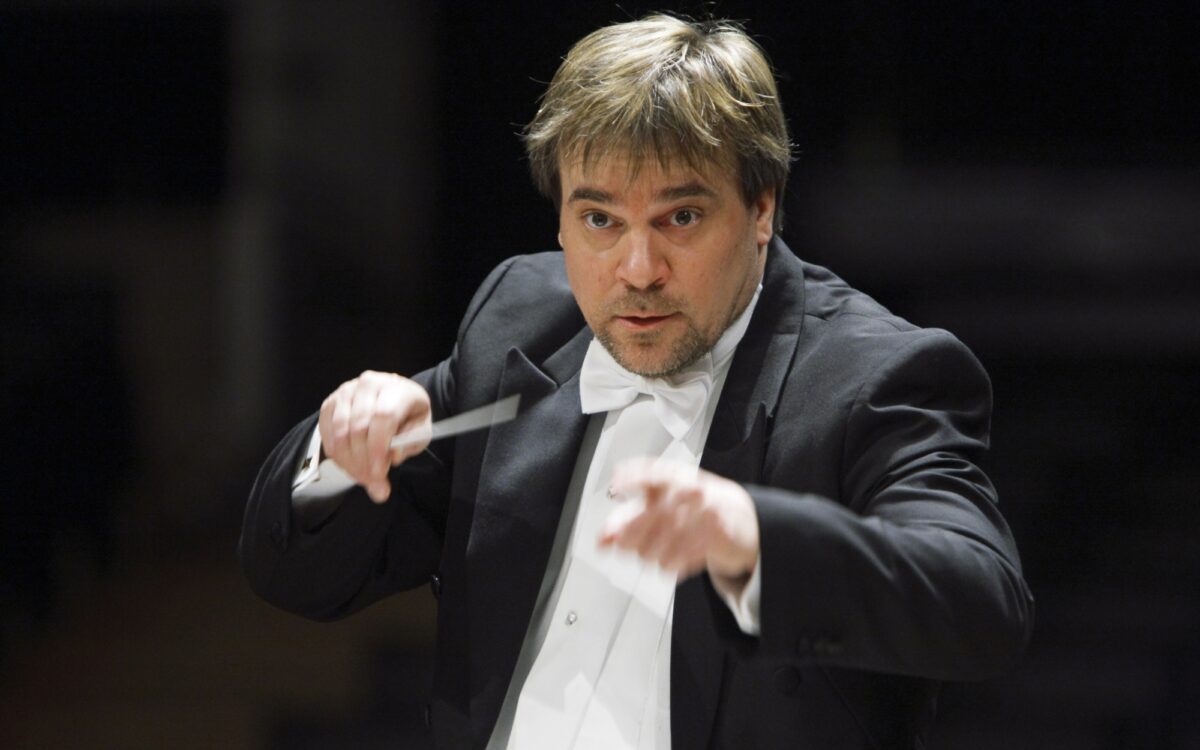Tapiola
Jean (Johan Julius Christian) Sibelius was born in Hämeenlinna, Finland, on December 8, 1865, and died at Järvenpää, at his country home near Helsinki, on September 20, 1957. He took the Gallicized form of his first name in emulation of an uncle.
Sibelius wrote Tapiola between March and May 1926 on a commission from the Symphony Society of New York. Walter Damrosch led the first performance on December 26, 1926—concluding a concert that began with Beethoven’s Fifth Symphony, then continued with George Gershwin’s Piano Concerto in F, with the composer as soloist. The score of Tapiola calls for piccolo, 3 flutes, 2 oboes, English horn, 2 clarinets, bass clarinet, 2 bassoons, contrabassoon, 4 horns, 3 trumpets, 3 trombones, timpani, and strings. Tapiola is about 15 minutes long.
Isaac Babel, renowned early 20th-century Russian playwright and short-story author, claimed that “if the world could write by itself, it would write like Tolstoy.” The tone poem Tapiola, which stands as Sibelius’s last completed major composition, inspires a sense of awe at the masterfully natural expression of reality through the lens of art as does, similarly, the hauntingly vivid prose of Anna Karenina. The subject matter, however, could not be more different. Whereas Tolstoy distills the essence of Man, Sibelius captures the wildness of Nature. Tapiola’s subject is the frigid, forbidding Finnish pine forests and Tapio, the fierce god-spirit of this wilderness, who rules over the trees and wildlife contained within. The composer himself provided some explanation of the piece by way of the following four lines of verse printed at the beginning of the score:
Widespread they stand, the Northland’s dusky forests,
Ancient, mysterious, brooding savage dreams;
Within them dwells the Forest’s mighty God,
And wood-sprites in the gloom weave magic secrets.
The portrayal of nature in music was certainly not new by this time, but Tapiola, in contrast to, say, the stylized playfulness of Vivaldi’s Four Seasons or Mahler’s madcap Arcadianism, is arrestingly austere. Like all art, music is chiefly a humanistic pursuit, meant to provide us with a window to our world. In this piece, however, there is the hair-raising sense that the paradigm has been reversed and that we are the ones being watched. There is the sense that the music is listening to us.
After a blustery opening, all sense of time is suspended, and for nearly twenty minutes, the music uneasily meanders about, breezy sighs and freezing gusts from the strings rustling leaves on branches and on the forest floor. Pregnant rests seem to stretch on interminably, and sustained notes in the winds create a static background that is most noticeable only when it suddenly disappears, leaving behind an eerily empty silence soon filled with anxious footstep-like runs in the violins and flutes. Throughout, the standoffish opening theme is always present, and though it appears in many guises and variations, it arrives at none that make it any less unsettling. Ostensibly this is a peaceful work overall, but it is peaceful only in the sense of primeval nature being left to its own devices, and when finally the piece drifts to an end with three unmistakable and unexpected pulses of a pure major triad, it’s hard not to wonder if everything doesn’t seem just a little too quiet.
Jay Goodwin
New York-based annotator Jay Goodwin is managing editor at the Metropolitan Opera. He has written for the Boston Symphony Orchestra, St. Louis Symphony, Australian Chamber Orchestra, Juilliard School, and Carnegie Hall and was the BSO’s Tanglewood Music Center Publications Fellow in 2009.
The first American performance of Tapiola—the world premiere, as noted above—was given by the Symphony Society of New York on December 26, 1926, at New York’s Mecca Auditorium, with Walter Damrosch conducting.
The first BSO performances of the piece were given by Serge Koussevitzky on November 4 and 5, 1932.

